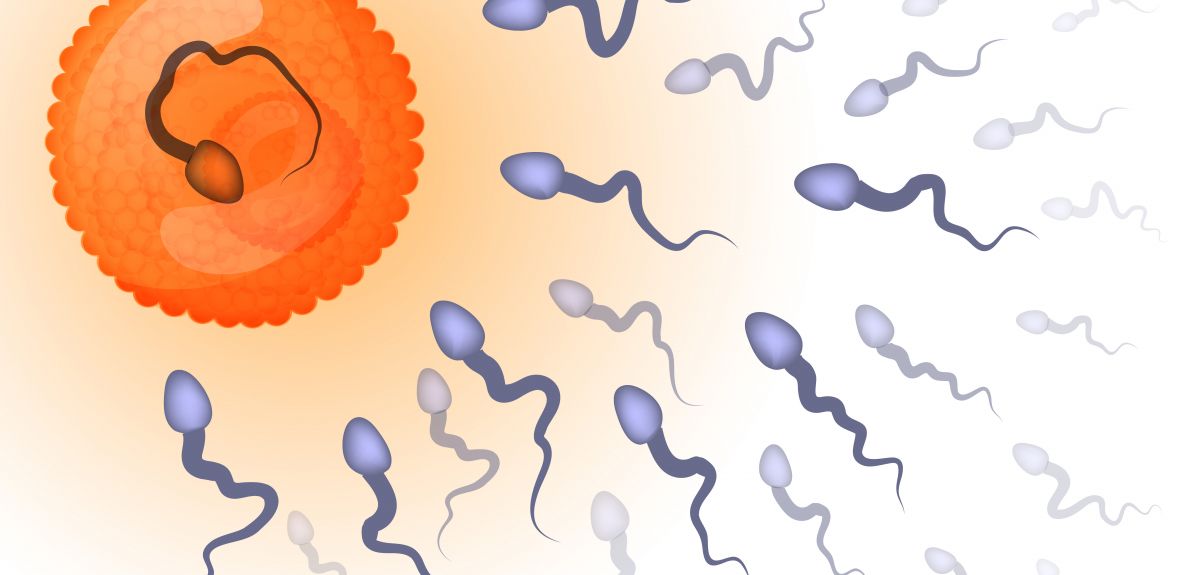
Maths formula offers key to sperm fertility
The rhythm with which individual sperm move could explain why some successfully fertilise the female egg and others fail, a new Oxford University collaboration has found.
From studying the rhythmic movements, researchers at the Universities of York, Birmingham, Oxford and Kyoto University, Japan, have developed a mathematical formula which makes it easier to understand how sperm make the journey to fertilise an egg.
This knowledge will help scientists to gauge why some sperm are successful in fertilisation and others are not, potentially helping to treat male infertility.
During intercourse, more than 50 million sperm set out to fertilise an egg, but only 10 make it to the final destination, before a single sperm wins the race and makes contact. The journey involved is treacherous and little known, and key to improving fertility treatment.
The findings, newly published in the journal Physical Review Letters, showed that a sperm’s tail has a characteristic rhythm that pushes the sperm forward, but also pulls the head backwards and sideways in a coordinated fashion. These actions move the fluid in a way that can be captured to form a relatively simple mathematical formula. Using this formula in practical medicine could mean that the complex and expensive computer simulations currently used in infertility screening, would no longer be needed. The team now aim to use this research to understand how larger groups of sperm behave and interact, a task that would be impossible using observational techniques.
‘Creating a mathematical formula that makes it easier to predict how large numbers of sperm swim will help us to understand why some sperm succeed and others fail.’
Dr Hermes Gadêlha, the paper's lead author, from the University of York’s Department of Mathematics
Dr Hermes Gadêlha, from the University of York’s Department of Mathematics, said: ‘Numerical simulations are used to identify the flow around the sperm, but as the structures of the fluid are so complex, the data is particularly challenging to understand and use. Around 55 million spermatozoa are found in a given sample, so it is understandably very difficult to model how they move simultaneously.
‘We wanted to create a mathematical formula that would simplify how we address this problem and make it easier to predict how large numbers of sperm swim. This would help us understand why some sperm succeed and others fail.’
The research demonstrated that the sperm has to make multiple contradictory movements, such as moving backwards, in order to propel it forward towards the egg.
Mathematically analysing slow motion video of human sperm swimming will make studying the dynamics of sperm populations simpler, potentially helping to treat male infertility.
Eamonn Gaffney, Associate Professor at the Oxford University Institute of Mathematics
The journey to fertilisation is not easy, says Dr Gadelha: ‘Every time someone tells me they are having a baby, I think it is one of the greatest miracles ever – but no-one realises the complexities involved, but the human body has a very sophisticated system of making sure the right cells come together.’
Speaking on the value and future uses of the research, Eamonn Gaffney, co-author and Associate Professor at the Oxford University Institute of Mathematics, said: ‘Mathematically analysing slow motion video of human sperm swimming reveals a graceful choreography with a surprisingly simple and elegant fluid flow around the cell as it moves. Using the formula will make studying the dynamics of sperm populations simpler, It could also be used to inform understanding across numerous applications, such as; developing a predictive understanding of sperm control in prospective micro devices for sperm handling and isolation in sperm research and assisted reproductive technologies.’
Now that the team has a mathematical formula that can predict the fluid movement of one sperm, the next step is to use the model for predictions on larger numbers of cells. The team also believe that it will have implications for new innovations in navigating infertility.
The research is published in the journal Physical Review Letters.
 New study reveals the COVID-19 pandemic’s impact on other causes of death
New study reveals the COVID-19 pandemic’s impact on other causes of death
 Researchers develop a way to test the ability of red blood cells to deliver oxygen by measuring their shape
Researchers develop a way to test the ability of red blood cells to deliver oxygen by measuring their shape
 New study calls for radical rethink of mental health support for adolescents
New study calls for radical rethink of mental health support for adolescents
 Oxford-led project awarded £2 million to revolutionise clean hydropower energy
Oxford-led project awarded £2 million to revolutionise clean hydropower energy
 Botanists name a beautiful new species of ‘lipstick vine’ discovered in the Philippine rainforest
Botanists name a beautiful new species of ‘lipstick vine’ discovered in the Philippine rainforest